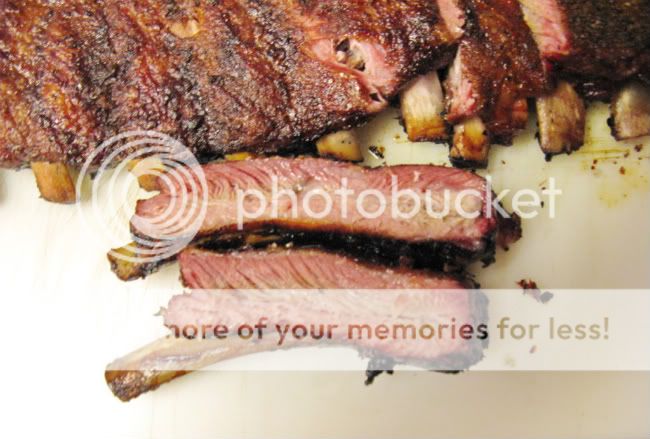I use hickory or a mixture of hickory and oak. Agreed that baby backs, poultry, etc. can become oversmoked quickly where you're tasting only smoke and no meat. I also am of the opinion that you can oversmoke the larger cuts too. I foil at the 4.25 to 4.5 hour mark of briskets, shoulders, butts, picnics, etc. For me this is the point where I've maxed out the smoke influence and the color is of a reddish/brown hue vs. towards black. I certainly foil for more reasons than smoke, but by foiling it helps prevent additional smoke from either penetrating the meat or from accumulating on the exterior of the meat. Even sweet blue gets overpowering when it's oak/hickory, IMHO. Even foiling at that point we have a NICE well-defined smoke ring. Ribs I foil at the 1.25 hour mark; same thing. I actually have a smoke ring vs. all pink over-smoked (IMHO).
Yes, a lot of what people are talking about when they mention over-smoking is creosote caused by wet or green wood and/or a fire that isn't hot enough. That aside, I'm of the personal opinion that even with sweet blue you can over-smoke meat. Like said above, to the point where it no longer enhances the flavor and begins to be the flavor.
Yes, a lot of what people are talking about when they mention over-smoking is creosote caused by wet or green wood and/or a fire that isn't hot enough. That aside, I'm of the personal opinion that even with sweet blue you can over-smoke meat. Like said above, to the point where it no longer enhances the flavor and begins to be the flavor.

